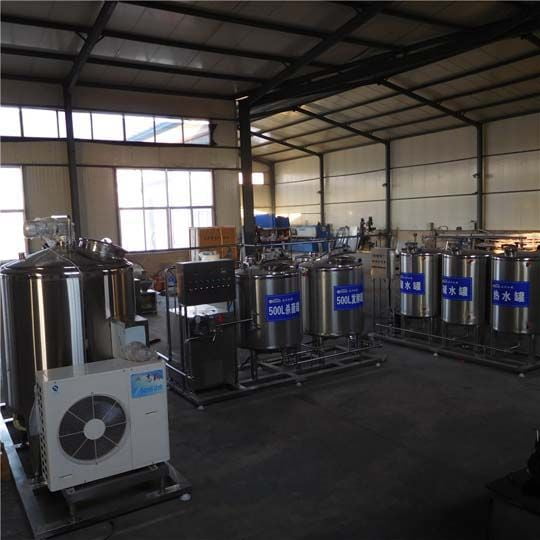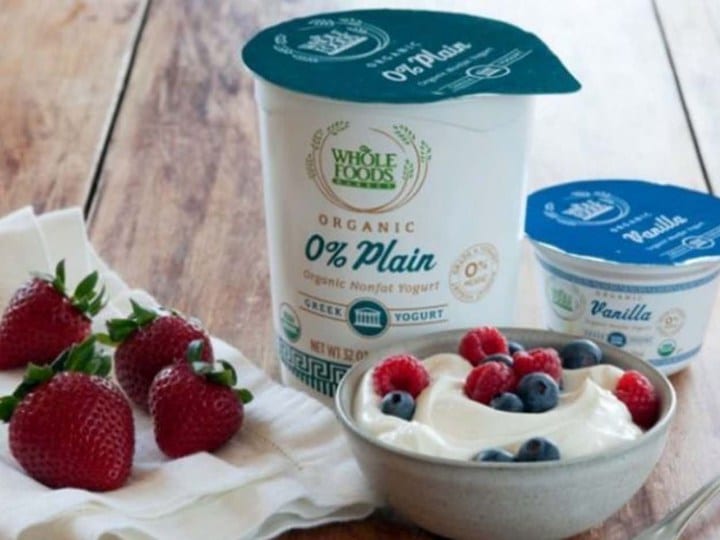Ως γαλακτοκομικό προϊόν πλούσιο σε θρεπτικά συστατικά, το γιαούρτι έχει πολύ μεγάλες δυνατότητες στην αγορά. Το γιαούρτι μπορεί να υποστεί επεξεργασία από ένα πλήρες σετ εξοπλισμού παραγωγής γιαουρτιού ή μπορεί να παρασκευαστεί από μια μηχανή ζύμωσης γιαουρτιού. Η παρασκευή γιαουρτιού απαιτεί όχι μόνο μηχανήματα υψηλής ποιότητας αλλά και την αντίστοιχη τεχνολογία. Στη διαδικασία της επεξεργασίας του γιαουρτιού, συναντάμε συχνά μια σειρά από προβλήματα, όπως η κοκκώδης υφή, η πολύ ξινή γεύση, η αραίωση του γάλακτος ή η αφυδάτωση. Τότε πώς να το λύσετε;
Συχνές ερωτήσεις και λύσεις για την παρασκευή γιαουρτιού με μηχανές γιαουρτιού
1. Κοκκώδης υφή κατά τη διάρκεια της ζύμωσης
Κατά την επεξεργασία του γιαουρτιού, όσο υψηλότερη είναι η θερμοκρασία ζύμωσης του γιαουρτιού, τόσο μικρότερος είναι ο απαιτούμενος χρόνος ζύμωσης, η ζύμωση μπορεί να σταματήσει νωρίτερα και στη συνέχεια να κρυώσει και να συσκευαστεί. Αυτή η πρακτική μπορεί να βλάψει την ποιότητα του τελικού γιαουρτιού. Το γιαούρτι μπορεί να έχει κοκκώδη υφή σε υψηλότερες θερμοκρασίες επώασης.

Γιατί συμβαίνει αυτό; Όταν η λακτόζη μεταβολίζεται και ζυμώνεται σε γαλακτικό οξύ, όσο πιο γρήγορα παράγεται το οξύ από την καλλιέργεια, τόσο περισσότερο θα επηρεάσει τις πρωτεΐνες του γάλακτος που είναι εγγενείς στο γιαούρτι. Η καλλιέργεια γιαουρτιού σε καθορισμένη θερμοκρασία 110 ° F μπορεί να φτάσει σε ένα pH που τερματίζει τη ζύμωση σε σύντομο χρονικό διάστημα - δηλαδή, 7,5 ώρες αντί για 8 ώρες. Ωστόσο, το ταχέως παραγόμενο οξύ των βακτηρίων γαλακτικού οξέος επηρεάζει την πρωτεΐνη του γάλακτος και την κάνει κοκκώδη σε ποιότητα σε μια δεξαμενή καλλιέργειας ή σε ένα φλιτζάνι (εάν ζυμωθεί σε ένα φλιτζάνι).
Λύση: Εάν το πρόβλημα προκαλείται από πολύ υψηλή θερμοκρασία ζύμωσης, τότε η προφανής λύση είναι να ρυθμίσετε μια χαμηλότερη θερμοκρασία καλλιέργειας. Δεδομένου ότι το γιαούρτι ζυμώνεται σε χαμηλότερη θερμοκρασία 104 ° F, παράγεται οξύ με πιο αργό ρυθμό, μειώνοντας έτσι την πιθανότητα να χτυπηθεί η πρωτεΐνη του γάλακτος.
2. Το γιαούρτι είναι πολύ όξινο και το PH του τελικού προϊόντος είναι πολύ χαμηλό
Οι παραγωγοί πρέπει να δώσουν προσοχή για να προβλέψουν το pH στο οποίο το γιαούρτι θα πρέπει να σταματήσει τη ζύμωση και να κρυώσει. Εάν το pH του γιαουρτιού στο έτοιμο φλιτζάνι αναμένεται να φτάσει το 4,3, τότε η ζύμωση μπορεί να χρειαστεί να σταματήσει σε pH 4,70, έτσι ώστε το γιαούρτι να συσκευάζεται σε φλιτζάνια λιανικής και το pH να μην είναι χαμηλότερο από αυτό που βρίσκεται σε κουτί, σε παλετοποίηση. και στην κατάψυξη 4.30.
Λύση: Προφανώς, η λύση σε αυτό το πρόβλημα είναι απλώς να αυξήσετε την τιμή pH στο τέλος της ζύμωσης, έτσι ώστε όταν το γιαούρτι ψυχθεί, ή όταν προστεθούν φρούτα και ζάχαρη, η τιμή pH του να κυμαίνεται λιγότερο προς τα κάτω, και τελικά να ψυχθεί εντελώς στη λιανική συσκευασία.

3. Το γαλακτώδες σώμα ή η υφή του γιαουρτιού είναι πολύ λεπτή
Αφού το γιαούρτι ζυμωθεί στην δεξαμενή ζύμωσης γιαουρτιού, θα ανακατευτεί υπερβολικά, προκαλώντας το προϊόν να έχει χαμηλή ιξώδη ή λεπτή υφή πριν εισέλθει στη τελική λιανική συσκευασία. Σε αυτή την περίπτωση, είναι πιθανό το προϊόν να κόπηκε πολύ κατά τη διάρκεια της ψύξης στη ζυμωτική δεξαμενή; ή κόπηκε πολύ κατά τη μεταφορά στην ψυχρή πλάκα; ή κόπηκε όταν προστέθηκαν φρούτα και επιπλέον ζάχαρη υπερβολικά.
Σημειώστε ότι μόλις το γιαούρτι φτάσει στο pH, πρέπει να προσέχετε να μην ανακατεύετε υπερβολικά το προϊόν σε κάθε βήμα της επεξεργασίας. Το υπερβολικό ανακάτεμα θα κάνει την υφή του γάλακτος να είναι πολύ λεπτή.
Λύση: Ρυθμίστε την ανατάραξη των γαλακτοκομικών προϊόντων στη δεξαμενή στο ελάχιστο κατά τη διάρκεια της ψύξης και πριν από τη πλήρωση. Αυτό μπορεί να σημαίνει διαλείπουσα ανατάραξη, τοποθέτηση του χρονοδιακόπτη στο μπλέντερ της δεξαμενής γιαουρτιού, ελαχιστοποίηση της διάτμησης στη δεξαμενή κατά τη διάρκεια της ψύξης. Όταν το προϊόν περιμένει να γεμίσει στο βάζο γεύσης, προσέξτε να μην ανακατεύετε υπερβολικά αυτή τη στιγμή.
